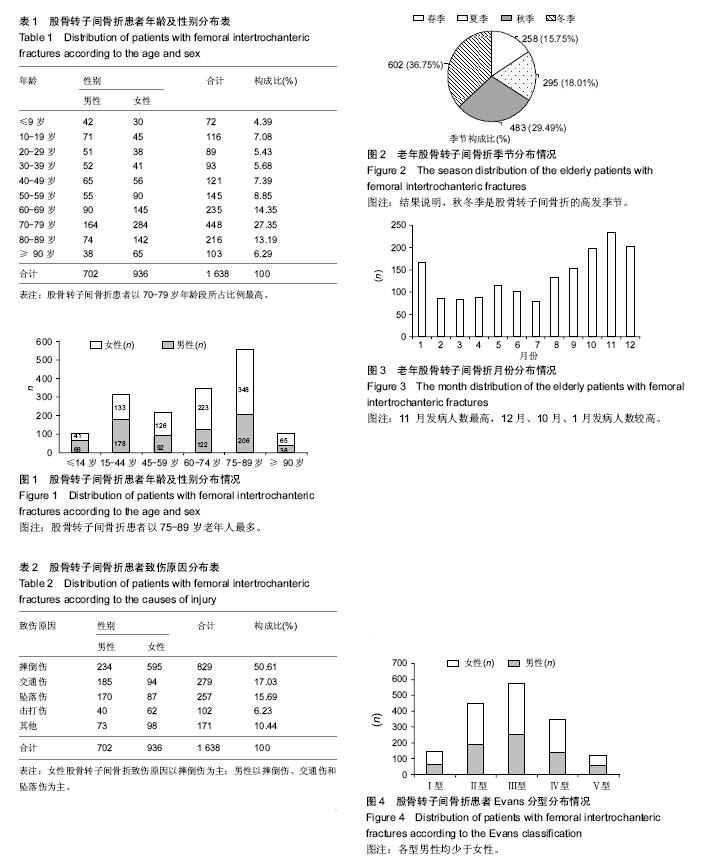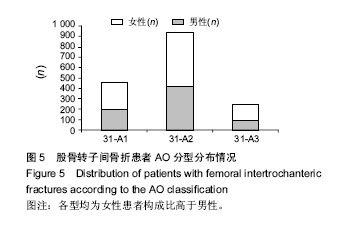中国组织工程研究 ›› 2017, Vol. 21 ›› Issue (16): 2467-2471.doi: 10.3969/j.issn.2095-4344.2017.16.002
• 骨组织构建 bone tissue construction • 上一篇 下一篇
呼和浩特市1 638例股骨转子间骨折流行病学分布特征分析
吉浩宇
- 内蒙古医科大学附属医院骨科,内蒙古自治区呼和浩特市 010059
Epidemiological characteristics of 1 638 patients with femoral intertrochanteric fractures in Hohhot
Ji Hao-yu
- Department of Orthopaedics, the Affiliated Hospital of Inner Mongolia Medical University, Hohhot 010050, Inner Mongolia Autonomous Region, China
摘要:
文章快速阅读:
.jpg)
文题释义: 股骨转子下骨折:大多数作者将这一骨折定义为发生在小转子上缘至股骨狭窄部之间骨折。骨折线有时近端延续至大转子,远端延伸至股骨上1/3的狭窄部以下;有的文献报道,发生率为髋部骨折的10%-30%。非手术治疗的并发症较高,多推荐手术治疗。 流行病学:是研究特定人群中疾病、健康状况的分布及其决定因素,并研究防制疾病及促进健康的策略和措施的科学。流行病学是预防医学的一个重要组成部分,是预防医学的基础。
结果与结论:①各年龄段中以70-79岁年龄段患者所占比例最高(27.35%),老年人总体比例高达61.17%,而老年人中尤以75-89岁老年人最多(33.82%),儿童人数最少(6.53%);50岁之前的男性患者人数多于女性,且在10-19岁年龄段有个发病小高峰,但50岁之后的女性患者人数明显多于男性(P < 0.05);②摔倒伤(50.61%)明显高于其他致伤原因(P < 0.05),是股骨转子间患者的主要受伤机制,但交通伤和坠落伤也是男性患者的主要受伤机制;③从季节流行趋势特点上来看,冬季发病率最高(36.75%),春季发病人数最低(15.75%);11月发病人数最高,7月发病人数最低;④Evans分型中以Ⅲ型骨折为主(35.23%),不稳定性骨折组比例要明显高于稳定性骨折组(63.74% vs. 36.26%)(P < 0.05);AO分型中以31-A2型比例最高(57.02%);⑤结果说明,呼和浩特市市股骨转子间骨折患者在年龄、性别、致伤原因、受伤时间、骨折分型等方面具有一定的流行病学分布特征。
中图分类号:


.jpg)